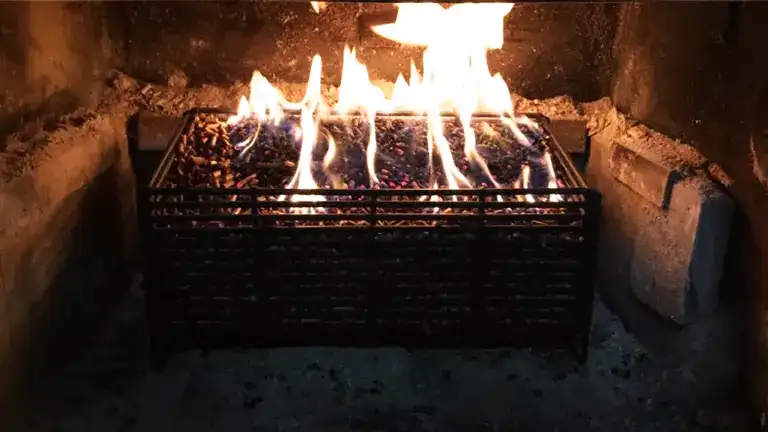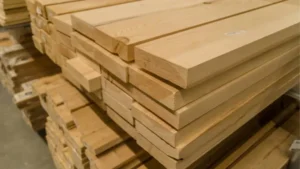Can You Burn Pellets In A Wood Stove?
- October 3, 2023
- 11 comment
Wood stoves, traditionally fueled by cordwood, have been a staple in homes for generations, offering a reliable source of warmth through the colder months. However, with advances in technology and increasing environmental awareness, many homeowners are now looking at alternative fuels. One such alternative is wood pellets, known for their efficiency and eco-friendliness. The question arises: Can you burn pellets in a wood stove? The answer is yes, but it’s not as straightforward as simply tossing them in. Here’s what you need to know.
Adapting Wood Stoves for Pellets
Adapting a traditional wood stove to burn pellets requires some modifications, as these stoves are typically designed to use cordwood, not pellets. The primary challenge is ensuring adequate airflow for pellet combustion, which is different from that required for cordwood. A common and effective solution is to use a pellet basket. This metal container fits inside the wood stove and holds the pellets, facilitating proper airflow around them to support efficient burning. The basket design ensures that pellets are spaced appropriately, allowing each pellet to receive enough oxygen to burn effectively.

When installing a pellet basket, it’s important to position it correctly within the stove to optimize airflow and combustion. Avoid overloading the basket, as this can restrict airflow and lead to incomplete combustion, reducing heat output and increasing emissions. Regular maintenance of both the basket and the stove is crucial for removing ash and ensuring the system operates efficiently and safely. Using a pellet basket allows homeowners to enjoy the benefits of pellet fuel, such as higher efficiency and cleaner burning, without the need to purchase a new pellet-specific stove.
Considerations and Challenges
Burning pellets in a wood stove isn’t without its challenges. The primary concern is achieving an efficient burn. Pellets need a controlled air supply to burn effectively, which traditional wood stoves might not provide. Furthermore, the ash produced by pellets can be significantly different from that of cordwood, potentially leading to quicker buildup and requiring more frequent cleaning.
Benefits of Using Pellets
- Pellets are known for their high burn efficiency. They can convert up to 90% of their material into heat, compared to about 60% for the best cordwood. This efficiency is not only good for the environment but can also reduce heating costs.
- Wood pellets produce significantly fewer emissions than traditional wood. They generate about 0.003 pounds of particulate emissions per million BTUs of heat output, compared to 0.07 pounds for wood, making them a cleaner choice.
- Pellets come in compact, easy-to-handle bags, and their uniform size makes it easy to store and manage fuel supplies.
Considerations When Using Pellets
- Rapid temperature changes and the different combustion properties of pellets can accelerate wear and tear on a wood stove not specifically designed for them.
- The initial setup for burning pellets, including purchasing a pellet basket and possibly making other modifications, can be an additional expense.
- Depending on your location, wood pellets may not be as readily available as firewood, which could influence your decision.
Installation and Safety
If you decide to burn pellets in your wood stove, consider consulting with a professional to ensure proper installation of any necessary accessories like a pellet basket. It’s also crucial to regularly inspect and maintain your stove to handle the different characteristics of pellet burning. Always ensure your stove is vented correctly to prevent any hazardous emissions from accumulating indoors.
Conclusion
While burning pellets in a traditional wood stove is an option, it requires careful consideration and proper setup to ensure efficiency and safety. Pellets offer a cleaner, more sustainable alternative to traditional firewood, aligning with modern environmental standards. If you are looking for an eco-friendly heating solution, consider adapting your wood stove for pellets or investing in a stove specifically designed for them.
Looking for the perfect wood stove for your home? Dive into our other articles for some top picks and insights!
- 10 Best Wood Stoves for Your Home in 2023
- Best Camping Wood Stoves 2023
- Best Small Wood Stoves on Amazon 2023
FAQs
- What are the benefits of burning pellets instead of wood in a stove?
Pellets offer higher combustion efficiency and more consistent heat output than traditional wood logs. They are also easier to store and handle, and produce less ash and fewer emissions, making them an environmentally friendlier option. - Can I use any type of pellet in my wood stove?
It’s important to use pellets that are specifically suited for stove burning, typically labeled as premium or high-quality. These pellets are made from cleaner wood sources and have lower moisture content, ensuring they burn more efficiently and cleanly. - How often should I clean my wood stove if I’m burning pellets?
Due to the finer ash produced by pellets, your stove might require cleaning more frequently than when burning wood logs. It’s recommended to inspect and potentially clean your stove every few weeks during heavy use to maintain optimal performance. - Do I need a special adapter to burn pellets in my traditional wood stove?
Yes, using a pellet basket or a similar adapter is necessary to ensure proper air flow and combustion when burning pellets in a wood stove. These adapters keep the pellets contained and help manage the air flow more effectively. - What should I do if my wood stove isn’t burning pellets efficiently?
Check if the air flow settings are adjusted properly for pellet burning. Also, ensure that the stove and the pellet basket are clean and that the stove door seals are intact. If issues persist, consult with a professional to see if your stove needs specific modifications. - Are wood pellets a cost-effective heating option?
Although the initial cost of pellets may be higher than wood, their higher efficiency and longer burn time can make them more cost-effective in the long run. Consider your local pellet prices and heating needs to evaluate cost-effectiveness accurately. - Can burning pellets reduce my carbon footprint?
Yes, pellets are made from compressed biomass waste, such as sawdust and wood scraps, making them a sustainable fuel source. Their efficient burn also produces fewer emissions compared to traditional wood logs, contributing to a lower carbon footprint. - What are the storage requirements for wood pellets?
Pellets should be stored in a dry, covered area to prevent moisture absorption. Moisture can greatly reduce their efficiency and can cause them to disintegrate. Keeping them off the ground in airtight containers or bags is ideal. - Is there a difference in heat output between wood logs and pellets?
Pellets generally provide a higher and more consistent heat output compared to wood logs, due to their uniform size and composition. They burn more completely and efficiently, making it easier to maintain a steady temperature in your home. - Can using pellets extend the life of my wood stove?
Burning pellets can potentially extend the life of your stove by reducing the buildup of creosote, a common cause of chimney fires. Pellets burn cleaner, reducing the amount of acidic creosote residue that can corrode stove and chimney interiors.
Thanks for reading our guide on using pellets in wood stoves! We hope this information helps you heat your home more efficiently and sustainably. Have you tried using pellets in your wood stove? We’d love to hear about your experiences or any tips you might have. Please share your thoughts in the comments below—let’s keep the conversation going and learn from each other!

David Murray
Forestry AuthorI'm David Murry, a forestry equipment specialist with a focus on chainsaw operation. With over 13 years of experience, I've honed my skills in operating and maintaining a wide range of machinery, from chainsaws to log splitters. My passion for the outdoors and commitment to sustainable forestry drive my work, which emphasizes safety, efficiency, and staying updated with industry advancements. Additionally, I'm dedicated to sharing my expertise and promoting environmental awareness within the forestry community.
11 comments
Will the technology evolution reach the point where you can cook or make hot coffee on a pellet stove?
Mary Boehme
October 5, 2023 11:07 amAm I missing something? If I burn trees it releases stored CO2, making it carbon neutral, but , if I burn fossil fuels (which aren't from fossils) it releases stored CO2 which increases the carbon footprint.????
Shepard
October 5, 2023 2:17 amBeen cutting and splitting wood for 50 years. Never chopped wood in my life. Not sure what that means
Ernie Ferguson
October 5, 2023 1:41 amCould use pellets in your stove, but it would be a waste of money because they’re designed for a pellet grill which burns them slowly you would have to dump in bucket loads and a big fire, and it would instantly burn them up within a few minutes time, so yeah if you’re willing to take a $20 bag That would blast you probably a few weeks with a pellet grill and Myrna hole $20 bag within 20 minutes time go ahead it’s your money
Paul
October 4, 2023 3:35 pmYou do know that they’re talking about HEATING pellets, right? NOT grilling or smoking pellets. Heating pellets range from $4-$10 per 40lb bag. I heat half my home with pellet stoves. But these are actually specifically designed for pellets and cannot burn whole wood.
Buddy C
October 5, 2023 1:46 amPrice per pallet delivered Bantry area Co. Cork.
Liam P Cunningham
October 4, 2023 11:03 amIf you're looking for the convenience of pellets but only have a wood stove, there is a product called biobricks that are basically large pellets designed to be burned in a wood burning stove. They are very close in price to average price of pellets per ton.
Paul Grayson
October 4, 2023 5:03 amHello, I live in Ireland and I have a Stanley multi fuel burning stove with a fitted water boiler which heats the rooms of the house and supplies hot water for personal use, looking at stoves in USA and Canada this seems not to be the case. Is operating a stove a bit of waste if no boiler is absent from the stove?
Joseph Murphy
October 3, 2023 8:05 pmI am a Canadian living in Ireland. Unlike house heated with hot water rads in Europe, many houses in NA use forced air furnaces heated by gas, oil or electricity. Back boilers and the such are not common at all. Wood stoves are used as supplementary heat to keep cost down or if you live in areas with an abundance of trees it can be your primary heat source. Houses in NA are usually much better insulated than Ireland and wood stoves are ideal for heating.
MDC
October 5, 2023 3:17 pmI have been using pellet conversion burners for years. My first was a 60,000 btu unit installed into a steel box cord wood boiler rated for 100,000 btu. My second is a 650,000 btu pellet burner installed into a 1,000,000 btu cast iron 12 section boiler. I am now converting two 350,000 btu hot air recycled oil furnaces. All my pellet conversion come from Europe from a company named Pelltec. Ken













I had thought about using pellets in my logburner and was looking for a suitable, reasonably priced container. Then it occurred to me that adding pellets to the stove once they had burned down was going to be difficult if not dangerous. How do you get the very hot pellet basket out to refill it? Putting fresh pellets into a hot basket runs the risk of ignition before you have put it back!
Paul Bradford
October 6, 2023 1:27 pm